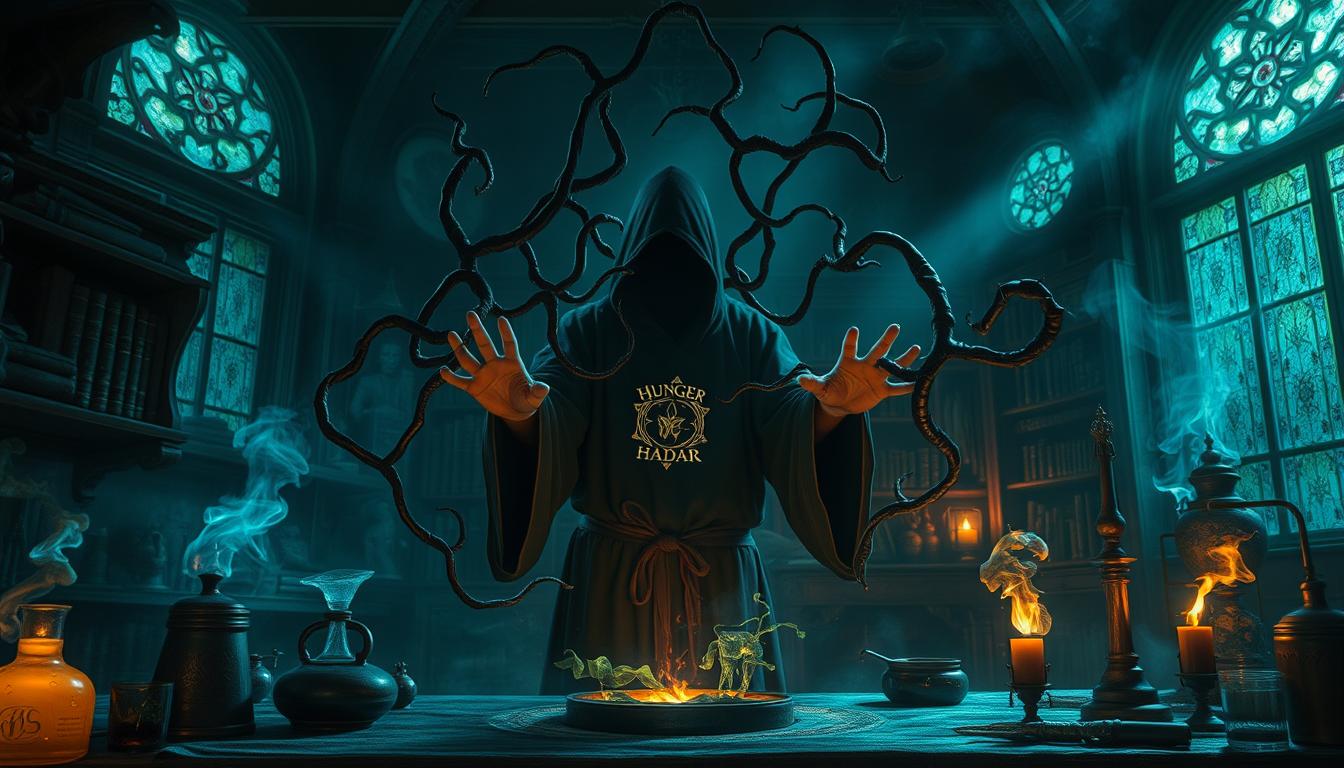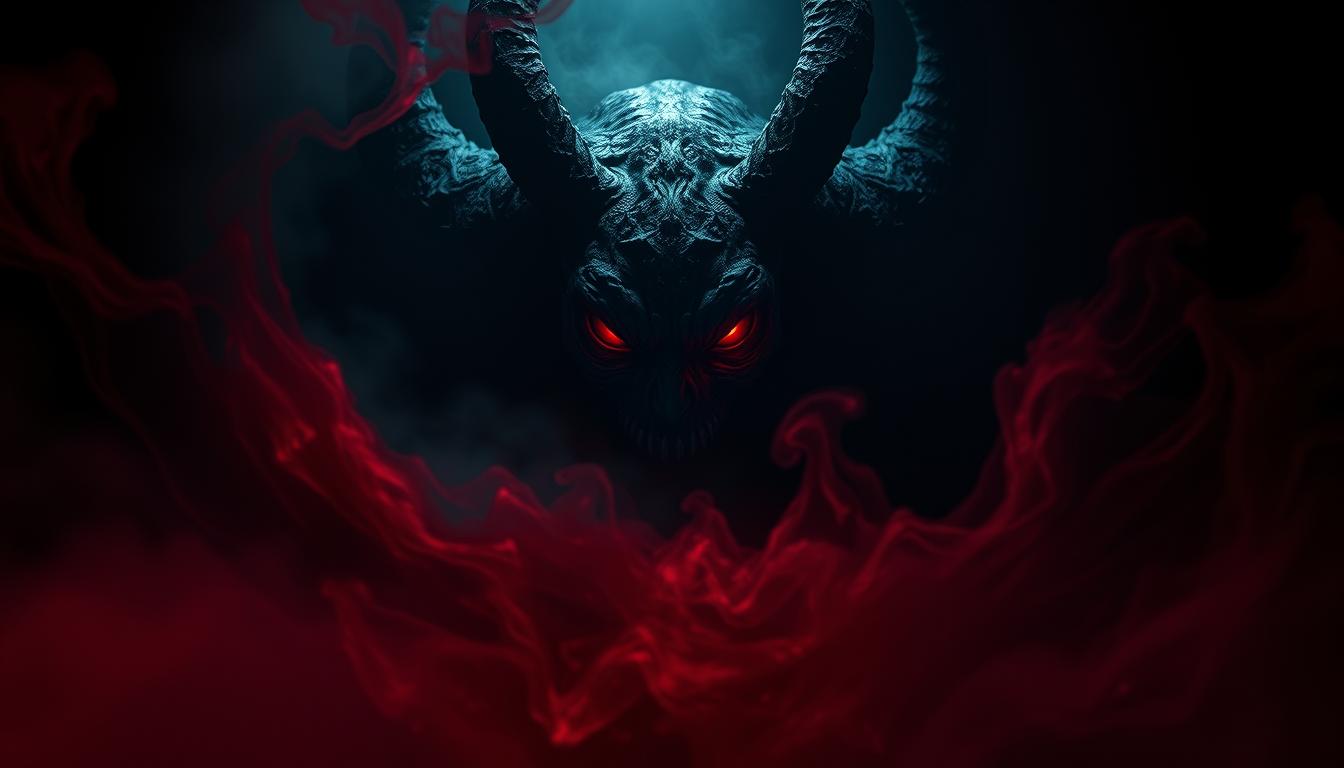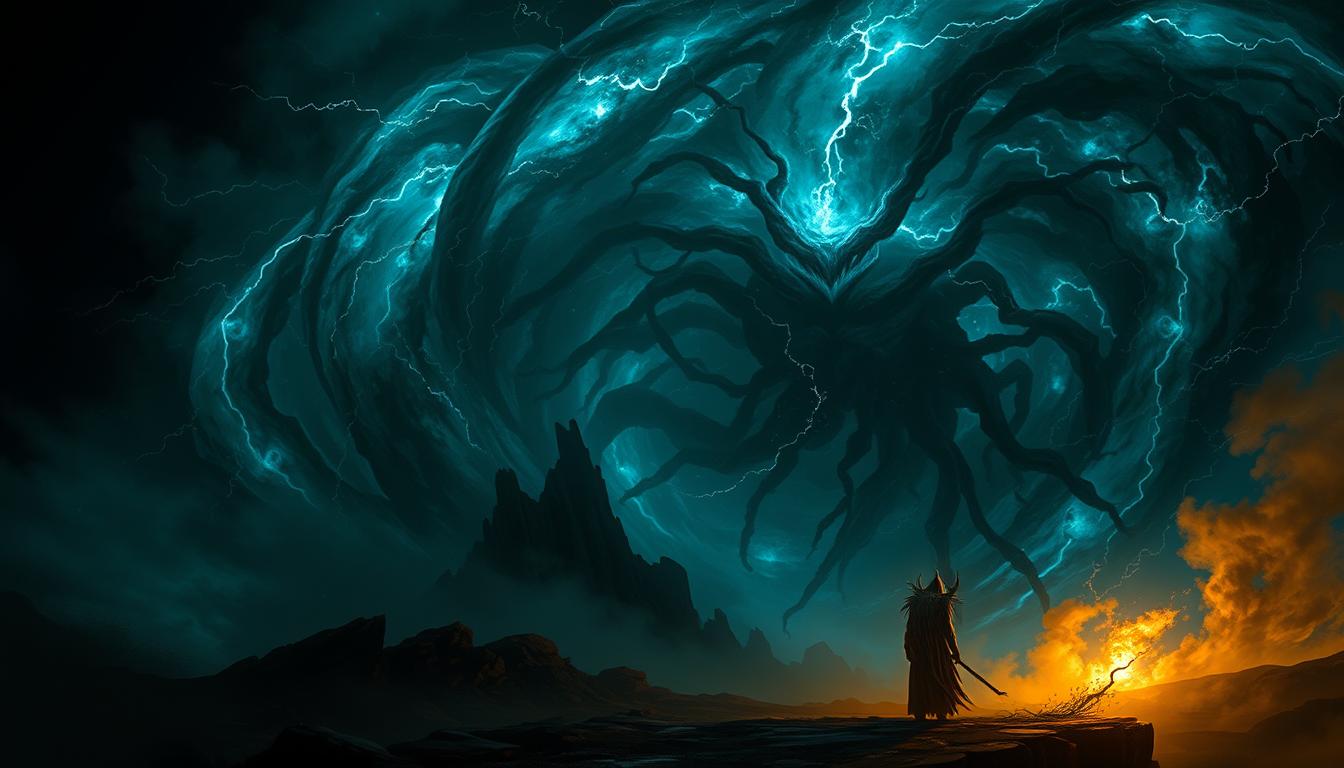Hunger Of Hadar 5e: Everything You Need to Know
I reach for this spell when I want to warp the battlefield and set a creepy tone. At 3rd-level conjuration, it takes one action and can land up to 150 feet away. The material is delightfully odd: a pickled octopus tentacle.
The effect creates a 20-foot-radius sphere of utter darkness and bitter cold. No light can pierce it and creatures fully inside are blinded. The area becomes difficult terrain, filled with soft whispers and slurping noises that echo up to 30 feet.
Any creature starting its turn there takes 2d6 cold damage. Those that end their turn must make a Dexterity save or take 2d6 acid damage. The spell lasts with concentration for up to one minute, so positioning and timing matter.
I use it to stall advances, lock down corridors, and force bad choices from foes. It’s less about an instant nuke and more about control, pressure, and a menacing atmosphere that reshapes the fight.

Key Takeaways
- This 3rd-level spell creates a 20-foot-radius sphere of dark control.
- It deals ongoing cold and potential acid damage each round.
- Use it to block chokepoints and force enemy movement.
- Watch out for friendly fire and concentration checks.
- Placement and timing turn mood into tactical advantage.
Why I Reach for Hunger Of Hadar in 5e Fights
I favor this control spell when early pressure will change the whole combat flow. Dropping it fast forces the enemy to either take damage each turn or waste movement and actions to escape the brutal area.
I use it to split encounters and wall off chunks of the battlefield. Fewer foes can reach us at once while the rest get rerouted or stuck. That space buys my team time to focus targets.
The darkness inside shuts down opportunity attacks and ranged focus fire. That lets my melee friends reposition without being lit up. If movement is the problem, the difficult terrain turns a clean charge into a slow, punishing slog.
- Steady damage softens frontliners so follow-ups finish them.
- I cast it to disrupt formations and force bad decisions.
- It’s resource-friendly: one concentration spell keeps paying dividends for many turns.

| Use | Effect | Best Moment |
|---|---|---|
| Seize tempo | Forces enemies to take damage or burn actions | At combat start |
| Split battlefield | Limits how many creatures can pressure you | When outnumbered |
| Protect reposition | Blocks ranged attacks and opportunity strikes | When allies need space |
Hunger Of Hadar 5e: Core Rules, Range, and Damage Timing
I pick a spot within 150 feet and watch a yawning black sphere blot out a chunk of the fight. This 3rd-level conjuration is cast in one action and lasts with concentration for up to one minute.
Range, size, and components
The spell centers on a point you can see up to 150 feet away. It creates a 20-foot-radius sphere of bitter cold and sphere blackness. Components are V, S, M (a pickled octopus tentacle), so watch for counterplay that targets material or somatic casting.
Damage windows explained
Any creature that starts its turn in the area takes 2d6 cold damage (2d6 cold). Any creature that ends its turn there must succeed on a Dexterity saving throw or suffer 2d6 acid damage (2d6 acid).
Darkness, blindness, and terrain
No light, magical or otherwise, can illuminate the zone; creatures fully inside are blinded. The area counts as difficult terrain, so even a fast enemy wastes movement escaping. Soft whispers slurping noises echo up to 30 feet, adding a sensory cue to the sphere.

| Feature | Detail | Why it matters |
|---|---|---|
| Range | 150 feet | Tag backline targets safely |
| Radius | 20-foot-radius sphere | Locks rooms and clusters |
| Damage timing | Start: 2d6 cold; End: Dex save or 2d6 acid | Predictable pressure each round |
How I Cast, Place, and Maintain the Spell for Maximum Impact
Planning matters more than flair. I begin by picking a visible point within 150 feet and imagining how the 20-foot sphere will slice the fight. Centering matters: a hair of movement can clip foes while sparing allies.
Targeting the point and controlling space
I visualize grid lines and doorways so the area covers choke tiles or the heart of clustered enemies. When I cast hunger hadar, I nudge the zone to force exits through the void.
I remind the party that no light can pierce this darkness, so allies avoid the edge unless planned.

Concentration tips to keep it for the full minute
- I pre-position to avoid opportunity attacks and to reduce the chance I take damage.
- I use cover and defensive spells to protect concentration and ready a backup if the spell ends.
- I place the sphere so slow brutes need extra movement to escape, upping their odds to fail a saving throw and eat more damage.
| Step | Why it helps | Quick tip |
|---|---|---|
| Pick point | Shapes enemy routes | Use sight lines |
| Use cover | Protect concentration | Half cover behind pillars |
| Plan backup | Recover fast if lost | Swap to control spells |
Tactical Uses, Combos, and Battlefield Control That Make Enemies Panic
When I drop the void in a narrow passage, enemy movement becomes a guessing game. I use the sphere to seal doors and force foes into the difficult terrain it makes. The area denies light, blinds creatures fully inside, and fills the fight with whispers and soft noises.
Chokepoints, hallways, and zone denial
I place the center just past doorways so anyone charging in starts their turn inside. That turns a hallway into a brutal area effect. Archers and casters lose sight and struggle to target anything while they also take steady damage.
Forced-movement combos
I shove, cast Thunderwave, or use telekinesis to push enemies back into the void. Grapplers and Sentinel fighters hold them inside to guarantee end-of-turn exposure and extra damage.
Devil’s Sight and vision tricks
I love pairing devil sight on a warlock so I can see what hadar creates while foes remain blind. That lets my team exploit the darkness safely and set ambushes with ready actions and held attacks.

Who Uses It Best and Why It Fits Their Kit
This option shines in parties that prize battlefield shaping and asymmetric vision. I find it slots naturally into builds that want long, grinding control rather than instant burst.
Warlocks get it natively, so I treat it as a signature pick. It oozes eldritch flavor and pairs perfectly with devil sight. I play it on bladelocks who drop the zone to split fights, then finish targets that stumble out.
Wizards make it work with push and pull tools. I script where enemies end their turns with spells and walls, then watch the area force bad choices.
Sorcerers love Metamagic here. I Quickened the spell to cast and still act, or used Subtle to place it without warning.
I pick this when controllers and grapplers can keep creatures inside the sphere. The start-turn cold and end-turn Dex save for acid stack as a steady source of damage.

| Class | Why it fits | Best use |
|---|---|---|
| Warlock | Native list, thematic, Devil’s Sight synergy | Bladelock control and reach |
| Wizard | Combines with push/pull and walls | Script enemy movement precisely |
| Sorcerer | Metamagic for positioning and stealth casts | Quickened placement + reposition |
Common Misplays, Table Rulings, and How I Avoid Friendly Fire
Mistakes with this spell usually come down to timing and map math. I call out two timing windows: a creature that starts its turn inside must take 2d6 cold immediately, while a creature that ends its turn inside faces a Dexterity saving throw to avoid 2d6 acid.
I treat darkness and blindness as separate effects. No light works in the zone, and any creature fully within is blinded. That means attack disadvantage for them and advantage for attackers who can see the target.
Movement and difficult terrain matter. I resolve halved speed correctly so a creature might fail to escape and therefore take more damage. Leaving and re-entering in one round doesn’t change who takes 2d6 cold or who must make the acid save.
- I mark the edge on the map so allies hover just outside and avoid accidental 2d6 hits.
- I call out when knockbacks or grapples will make an enemy end its turn inside the area effect.
- I remind the table darkvision does not bypass this darkness unless a feature explicitly ignores light-blocking effects.
| Issue | Common Error | My Ruling |
|---|---|---|
| Start vs end turn | Players mix timing | Start = take 2d6 cold; end = Dex save for 2d6 acid |
| Darkness vs blindness | Assume darkvision works | No light works; fully within = blinded unless ability bypasses light block |
| Difficult terrain | Ignore movement penalty | Halve movement in zone; use rules to see if creature can leave |
| Friendly fire | Allies wander in | Mark edges, pre-brief strategy, and keep frontliners a square out |
My Step‑By‑Step Game Plan for Casting Hunger of Hadar
Before I cast, I silently map exits and chokepoints so the zone hits the most foes and spares my team.
I pick a visible point within 150 feet that locks the doorway or the enemy cluster. The goal is to cover many foes with the 20-foot-radius sphere while keeping allies one square back.
When I cast hunger hadar, I announce the edges loud and clear so melee know where to hold. I tell the party the timing: at start turn a creature will take 2d6 cold damage, and ending inside forces a Dexterity saving throw to avoid 2d6 acid damage.
I spend my movement finding cover and use Dodge or defensive options to protect concentration for up to one minute. Then I call for shoves, Thunderwave, or Repelling Blast to force a creature to end its turn in the area effect and take damage.
- I angle the zone to threaten backline casters and archers.
- I track who already ate the start-of-turn hit so we focus what stumbles out.
- I keep a contingency: if I lose the spell, I swap to another control piece to keep momentum.
| Step | Action | Why it helps |
|---|---|---|
| Pick point | 150 ft visible, center on clusters | Maximizes trapped enemies |
| Announce edges | Call clear squares for allies | Prevents friendly fire |
| Force end-turn | Use shove/knockback | Secures 2d6 acid damage via saving |
Conclusion
I treat this conjuration as a tempo tool: it slows, blinds, and punishes mistakes. A 20-foot-radius sphere of sphere blackness reshapes the fight for up to one minute while you protect concentration.
The dependable timing matters: a creature that starts its turn will take 2d6 cold, and ending inside forces a Dexterity saving throw to avoid 2d6 acid damage. That predictable pressure lets you plan who to force into the void.
This area effect is pure denial: no light works, movement is halved as difficult terrain, and whispers and slurping noises unsettle foes within 30 feet. Place it smart, call edges loud, force ends inside, and let the dark do the work.